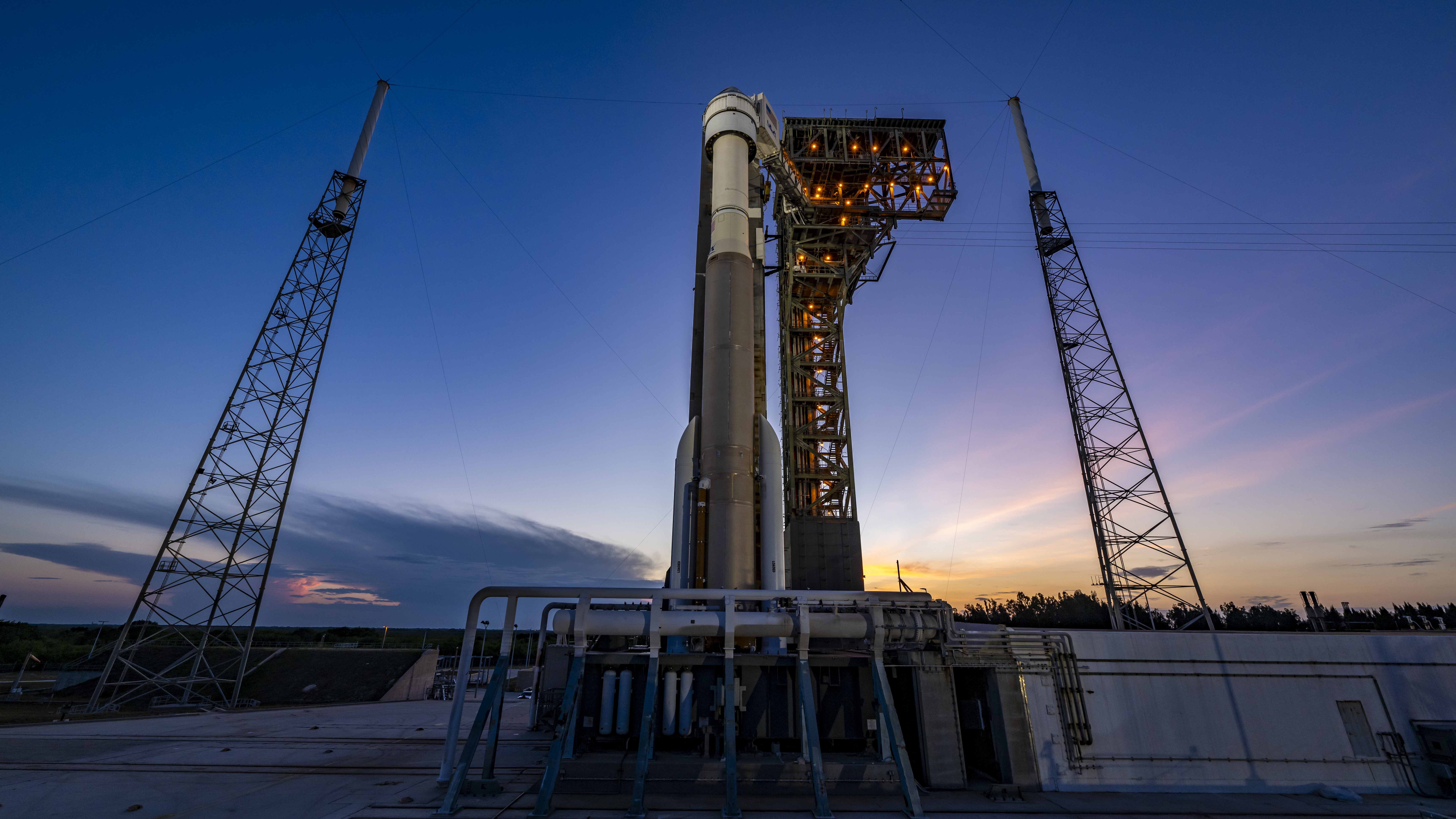
United Launch Alliance (ULA) will return the Atlas V booster from Cape Canaveral Space Force Station’s storied Space Launch Complex (SLC)-41 to the 30-story Vertical Integration Facility (VIF) on Wednesday to replace a faulty oxygen pressure regulation valve on the Centaur upper stage. The decision to rollback the 172-foot-tall (52.4-meter) stack—topped with Boeing’s CST-100 Starliner crew-carrying spacecraft—has triggered a lengthier delay until no sooner than 6:16 p.m. EDT Friday, 17 May, for the launch of Crew Flight Test (CFT) Commander Barry “Butch” Wilmore and Pilot Suni Williams for their long-awaited mission to the International Space Station (ISS).
Originally scheduled to fly during an instantaneous “launch window” that opened and closed at precisely 10:34:14 p.m. EDT on Monday, 6 May, the mission enjoyed a smooth countdown until just two hours prior to liftoff. Fueling of the Atlas V’s Common Core Booster (CCB) and Dual-Engine Centaur (DEC) with cryogenic liquid oxygen and hydrogen was completed without apparent incident and shortly before 8 p.m. EDT Monday Wilmore and Williams, clad in their customized “Boeing Blue” launch and entry suits, arrived at SLC-41 and began the process of taking their seats aboard Starliner.
But at 8:34 p.m. EDT, as communications checks and pressure checks were underway, ULA Launch Director Tom Heter III made the decision to scrub the launch, following observations of a faulty oxygen relief valve on the DEC. Initially, teams targeted a second launch attempt no earlier than 9 p.m. EDT Friday, 10 May, but the decision to rollback the giant Atlas V—flying in its “N22” configuration, nicknamed “The Bodyguard”—prompted a lengthier delay until Friday 17th.
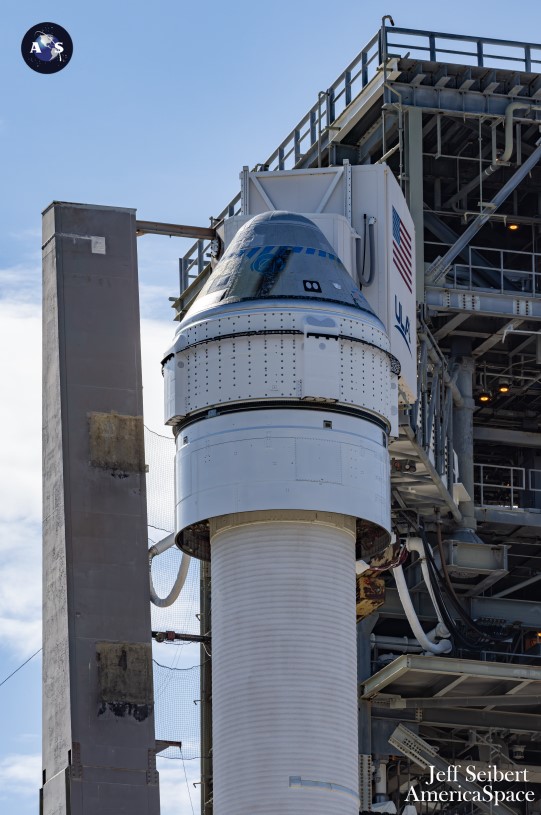
“Following a thorough data review completed on Tuesday, United Launch Alliance decided to remove a replace a pressure regulation valve on the liquid oxygen tank on the Atlas V rocket’s Centaur upper stage,” ULA reported. “ULA plans to roll the rocket…back to its Vertical Integration Facility on Wednesday, 8 May, to begin the replacement.
“The oscillating behavior of the valve during pre-launch operations ultimately resulted in mission teams calling a launch scrub,” it added. “After the ground and flight crew safely egressed from SLC-41 last night, the ULA team successfully commanded the valve closed and the oscillations were temporarily dampened.
“The oscillations then reoccurred twice during fuel removal operations,” the ULA summary continued. “After evaluating the valve history, data signatures from the launch attempt, and assessing the risks relative to continued use, the ULA team determined the valve exceeded its qualifications and mission managers agreed to remove and replace the valve.”
Wilmore and Williams, who have been in Florida since 25 April, will remain in quarantine in crew quarters on the third floor of the Neil Armstrong Operations & Checkout (O&C) Building at the Kennedy Space Center (KSC) during the delay downtime. The pair have been in dedicated training together for CFT since June 2022 and plan to spend at least eight “docked” days aboard the ISS conducting a wide range of critical flight test objectives as NASA and Boeing complete the end-to-end certification of Starliner ahead of its role as the second Commercial Crew vehicle alongside SpaceX’s Crew Dragon.
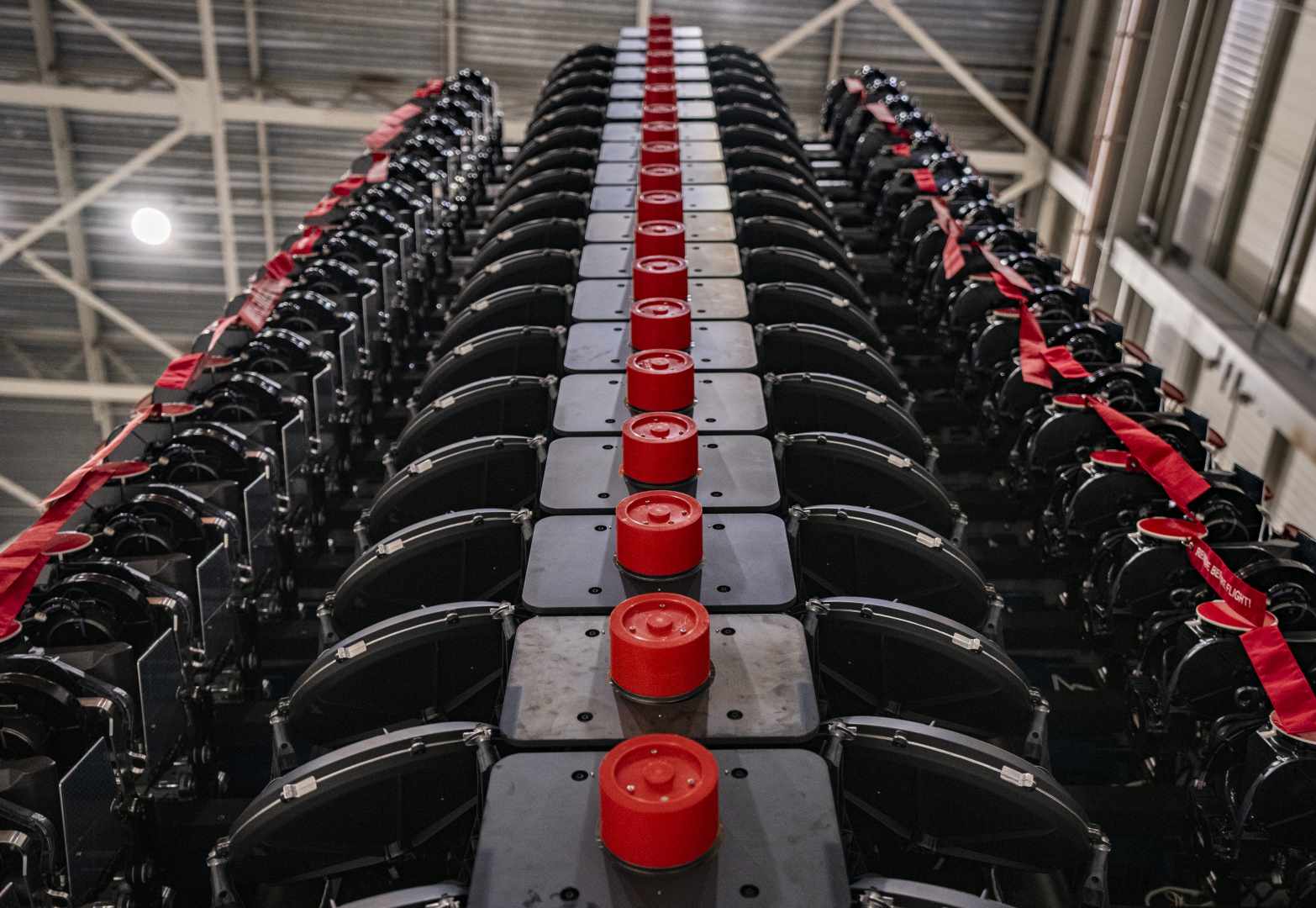
With CFT slipping until the tail end of next week, attention now turns to a pair of SpaceX Falcon 9 missions set to launch less than 12 hours apart on Wednesday from Florida and California. The two flights will mark the fourth and fifth missions by the Hawthorne, Calif.-headquartered launch services provider inside the opening ten days of May and between them are tasked with deploying dozens of new Starlink internet communications satellites into low-Earth orbit, including several with “Direct-to-Cell” functionality.
First up from historic Pad 39A at Florida’s Kennedy Space Center (KSC) will be newcomer B1083, a booster which came online in March and will be making her third flight in three consecutive months. Her maiden launch successfully lofted Dragon Endeavour and Crew-8’s Matt Dominick, Mike Barratt, Jeanette Epps and Aleksandr Grebenkin on the first leg of their trek to the space station, while a second mission in April delivered a 23-strong batch of Starlinks into orbit.
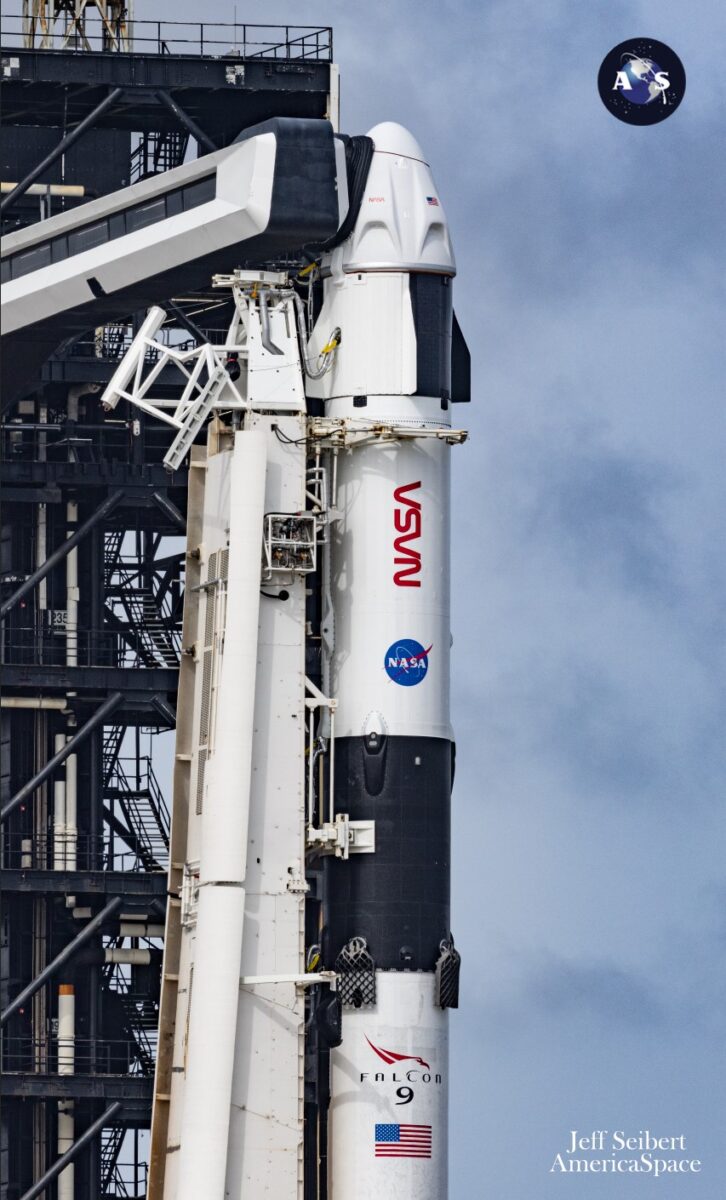
In readiness for Wednesday’s opening Falcon 9 launch, the East Coast-based Autonomous Spaceport Drone Ship (ASDS), “A Shortfall of Gravitas”, put to sea out of Port Canaveral on Sunday, bound for a recovery position offshore in the Atlantic Ocean. SpaceX are targeting an expansive launch window from 11 a.m. EDT through 2:48 p.m. EDT, with another group of opportunities opening at 10:16 a.m. EDT Thursday if needed.
Weather conditions in Florida for both days are predicted to be around 90-percent-favorable, according to data provided by the 45th Weather Squadron at Patrick Space Force Base. “Moisture extent is limited to the very lowest levels of the atmosphere,” it noted in a Tuesday update, “so there will be only a slight chance of Cumulus Cloud Rule violation at sea breeze onset during the midday hours.”
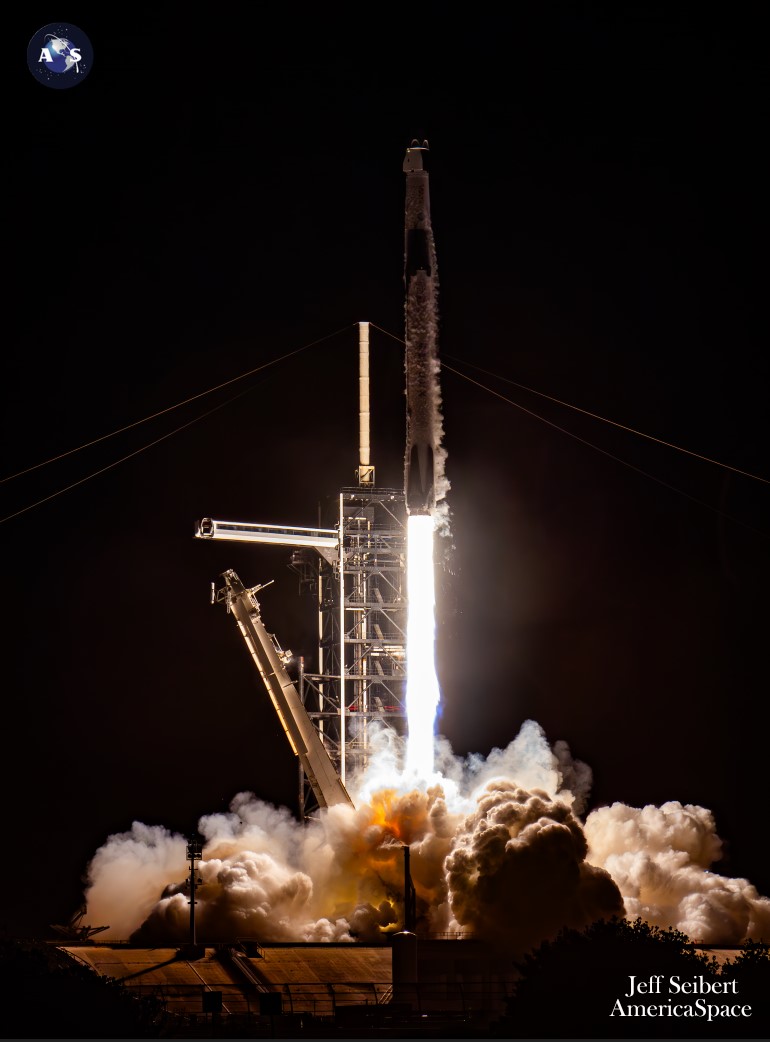
Wednesday’s second Falcon 9 mission is also a relative newcomer to the fleet, as B1082 readies for her fourth launch since January. First flown on 2024’s first SpaceX mission, she went on to launch a second time in mid-February for the 300th flight of a Falcon 9 vehicle— successfully wrapping up the 200th consecutive safe landing of a booster—and rocketed uphill a third time last month for the U.S. Space Force’s USSF-62 mission with the first Weather System Follow-on Microwave (WSF-M) meteorology satellite.
Liftoff is set to occur at 7:48 p.m. PDT, with backup options available until 10:30 p.m. PDT, plus a suite of opportunities on Thursday from 7:48 p.m. PDT. At the end of her fourth mission, B1082 will return to land on the deck of the West Coast drone ship, “Of Course I Still Love You”, located offshore in the Pacific Ocean.
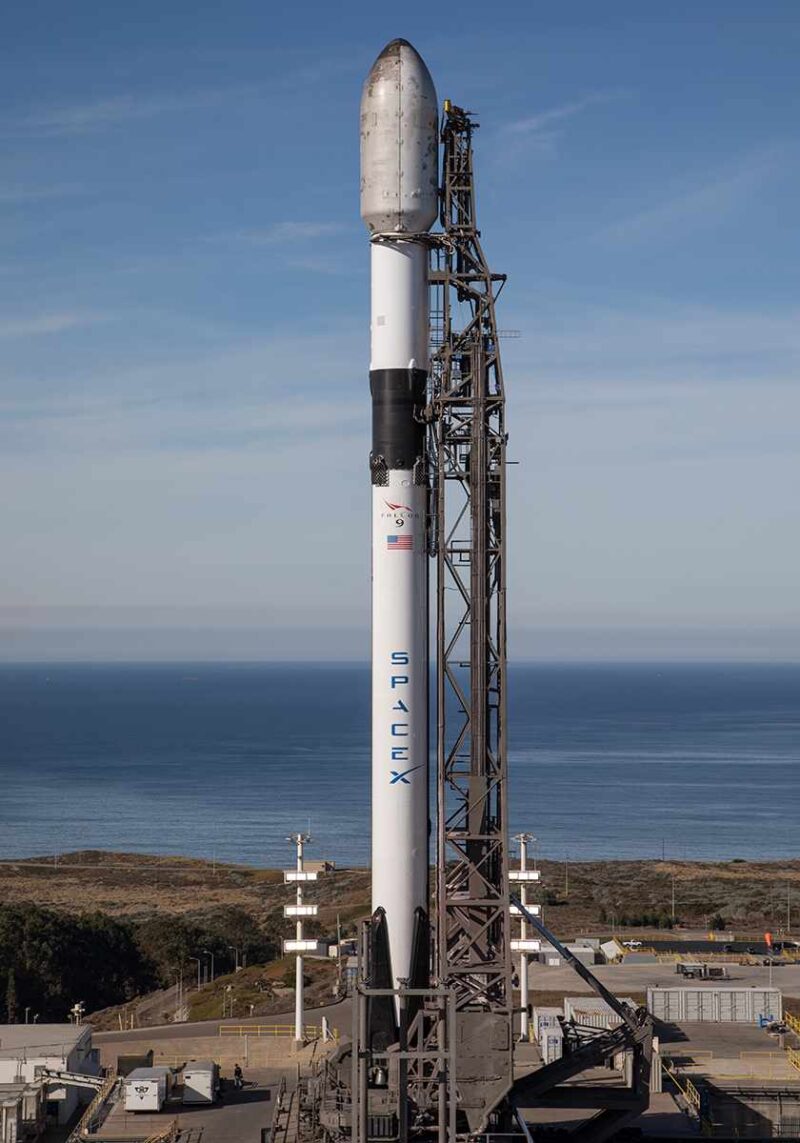
Targeting launch from Space Launch Complex (SLC)-4E at Vandenberg Space Force Base, Calif., this mission will mark the 75th flight of a Falcon 9 out of the mountain-ringed West Coast site since September 2013. Sixteen first-stage boosters have supported those flights, delivering more than 1,400 Starlinks into orbit, as well as nine batches of Iridium NEXT global mobile communications satellites, five military missions for the National Reconnaissance, the Space Force and the Space Development Agency (SDA) and four multi-customer Transporter “stacks”, totaling 289 discrete payloads covering a smorgasbord of science, technology and educational outreach disciplines.
Added to that list, Vandenberg-launched Falcon 9s have boosted several Earth-observation payloads and NASA’s Double Asteroid Redirection Test (DART) into deep space to investigate the asteroid Didymos and impact its tiny companion, Dimorphos. With an increased launch tempo having been achieved in the last two years, more than half of these 75 West Coast missions have flown since the start of 2023.
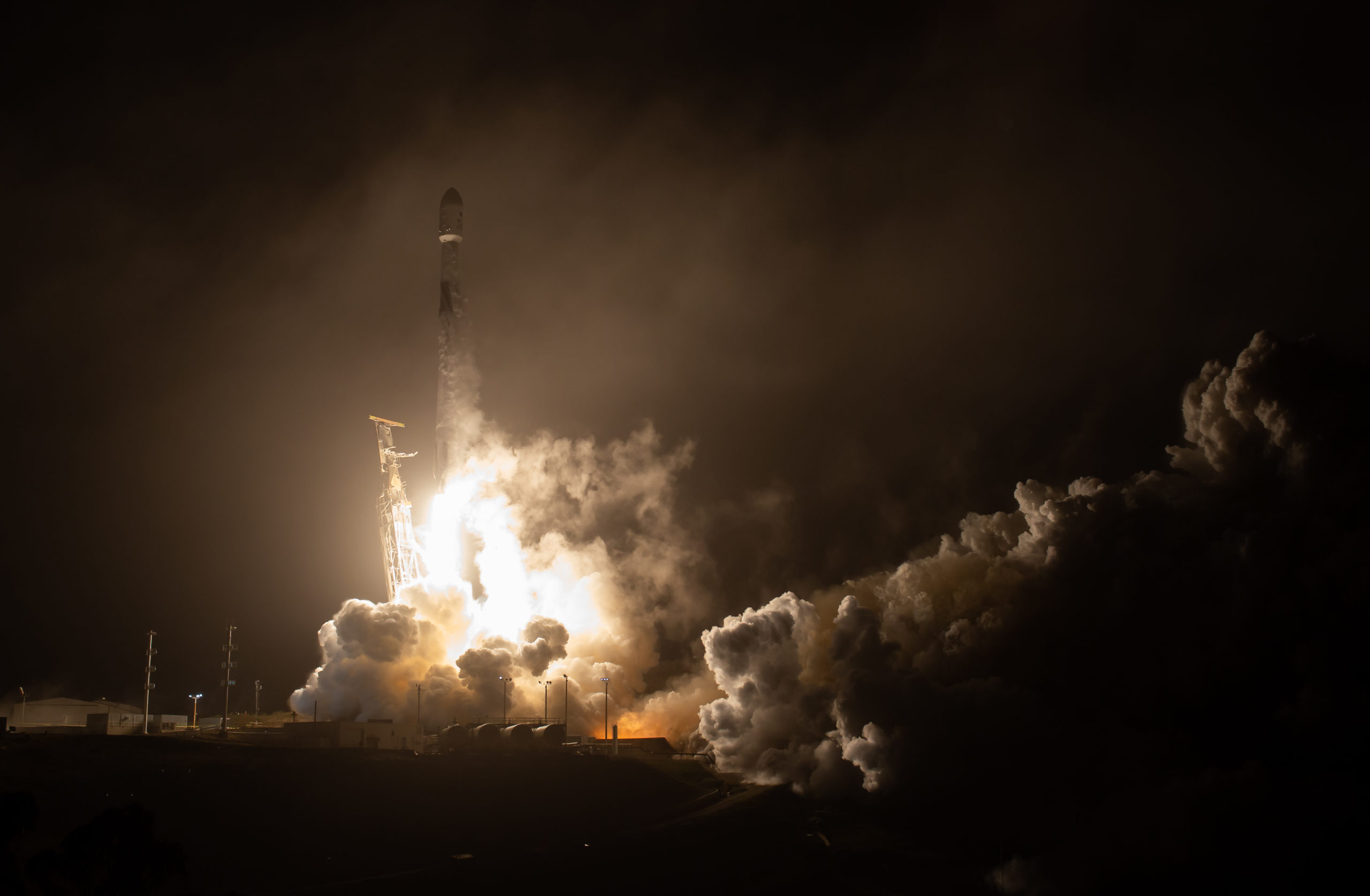
And that tempo has seen a rapid uptick in the numbers of “Vandenberg Falcons” flying more regularly than ever before. SpaceX accomplished its first dual-launch month from the Californian site in February 2022, then saw three flights for the first time in April of last year and completed its first four-mission month last January.





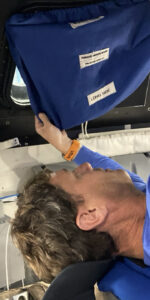
5 Comments
5 Pings & Trackbacks
Pingback:A Day in the Life of an Artemis Crew - AmericaSpace
Pingback:A Day in the Life of an Artemis Crew - SPACERFIT
Pingback:SpaceX Completes 14-Mission May, as CFT Starliner Prepares to Shine - SPACERFIT
Pingback:CFT Launch Scrubbed, Teams Recycle for “Possible” Next Attempt Tomorrow - AmericaSpace
Pingback:CFT Starliner Counts Down to Wednesday Launch, Weather 90% Favorable - AmericaSpace